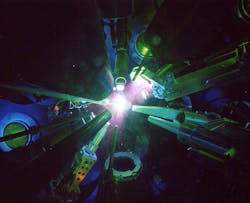Air Force researchers look to Stellar Science for advanced laser weapons simulations
Officials of the Air Force Research Laboratory at Kirtland Air Force Base, N.M., are awarding a $7.4 million contract to Stellar Science Ltd. Co., in Albuquerque, N.M., involving the Directed Energy High Performance Computing Software Applications Institute.
Stellar Science has scientific and software engineering capabilities in scientific computing, modeling, and visualization tools and products.
Related: Navy announces plan to deploy laser weapon aboard amphibious assault ship late this summer
Stellar Science experts will develop a capability to perform end-to-end simulations of all directed energy weapon systems by integrating laser source, target effects, ancillary system components, and propagation simulations.
The company also will develop directed energy platform system, engagement, and mission level models, including basic research and development of underlying directed energy technologies, as well as using simulations for improving directed-energy weapon system component performance.
Stellar Science concentrates on computer vision, 3D shape reconstruction, image processing; computer-aided design and geometry processing; scientific modeling, simulation, and prediction; and RF, high power microwave, thermal, multi-spectral physics, and laser physics.
The company's domain expertise includes physics-based simulation, including image simulation, thermal modeling, high-power microwave generation and propagation, and radio-frequency antenna modeling.
For image generation, Stellar Science employs reverse Monte-Carlo, multi-bounce raytracing, photon mapping, and other techniques to sample all possible light paths from radiation sources to image-sensing receivers, company officials say.
On this contract Stellar Science will do the work at Kirtland Air Force Base, N.M., and should be finished by January 2018. For more information contact Stellar Science online at http://stellarscience.com, or the Air Force Research Laboratory at www.kirtland.af.mil/afrl_vs.
